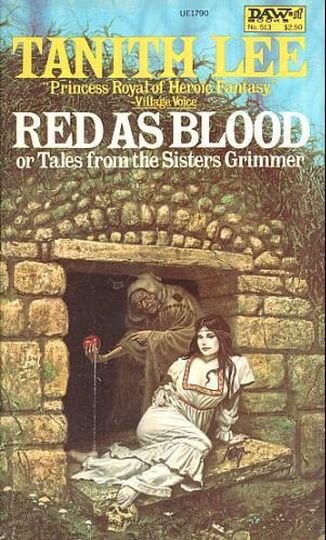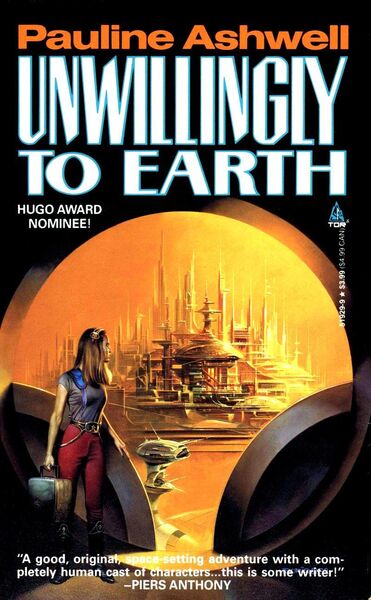Thursday Recs
Do you have a rec for this week? Just reply to this post with something queer or queer-adjacent (such as, soap made by a queer person that isn't necessarily queer themed) that you'd, well, recommend. Self-recs are welcome, as are recs for fandom-related content!
Or have you tried something that's been recced here? Do you have your own report to share about it? I'd love to hear about it!
(no subject)
I don’t want to lock him in for a variety of reasons. I feel like we’re almost back in the baby stages of being woken up at night! I was hoping it was just a phase we’d get through, but it’s really dragging on at this point. He’s also been tired during the day so he’s not getting enough sleep. Any ideas?
—Mom in the Land of 10,000 Yawns
( Read more... )
Knee update
Speaking of which, my partner and I had this funny exchange:
Me: Hopefully no thunderstorms this weekend.
Me: It's hard to plan 12-hour walks if you know it might lightning on you.
Her: yeah
Her: i mean, i believe you, i don't really know what 12 hr walks are
Her: even as a concept, it's a bit like "not even light can escape a black hole", ok I trust you, but I don't understand
Me: 😂
Actually reading a novel
I had one of those "leave for London at 6:30 am, get home at 10pm" work days today, so I'm too tired to say much tonight (which is a shame because I was actually there for something interesting this time!).
I will say that on the train two and from I read about half of a book called I Was a Teenage Slasher by Stephen Graham Jones and I'm enjoying it very much. It is gory, but as usual the real horrors for me are the emotional pain, which this book is describing very well. I just have to be careful about things with teenagers dying...especially in small towns.
No, I Didn’t Write It, No, They Didn’t Ask, No, They Didn’t Have To


The comic book company IDW, in conjunction with Paramount, which owns Star Trek, has come out with a limited edition comic book series called Red Shirts, which is about the security teams in the United Federation of Planets, the first issue of which came out yesterday. Clearly from the cover and the panels you can see here, the comic series will not be shying away from the essential nature of the red shirt in the Star Trek universe, which is, to die for dramatic story purposes.
As most of you know, I wrote a book 13 years ago called Redshirts, which essayed this same concept, albeit not in the Star Trek universe specifically, and it did pretty well, becoming a New York Times best seller and winning the Hugo Award for Best Novel, among others. So how do I feel about IDW/Paramount now coming in and releasing some comic books with almost exactly the same name?
I feel fine about it. One, I don’t own the trademark on “red shirt” or any variation thereof (nor did Paramount when I wrote my novel, I checked), and I wrote a novel, not a comic book series, and anyway I borrowed the concept from Star Trek’s fandom, from whence the phrase came. I can’t exactly get worked up if Paramount and IDW reappropriate a concept I appropriated in the first place. Second, the phrase and concept have been used by others in other media before – there was a card game with just about the same title a while back, as just one example. We’re all working in a same pool. Overlaps will happen.
The only real issue — one I’ve already seen online — is that some folks appear to think I have some participation in this IDW limited series. I don’t. I’m not the writer (a fellow named Christopher Cantwell is), nor did anyone involved in this comic get in touch with me. Not that they should have; from what I can tell about the story it has only the vaguest common elements with my own novel. It’s its own thing, and should be appreciated as such. I mean, I hope it’s good. I wouldn’t want something even mildly adjacent to my own work to be junk. The early reviews I’ve seen of the first installment seem to be pretty positive. So there’s that.
Anyway: Nope, not based on my thing, nope, they didn’t check in with me, nope, I’m not upset at that, and nope, I shouldn’t be upset even if I were. Give it a shot and see if you like it.
— JS
Sunshine Revival/Challenge 2025 #5: Enjoyable Things
Challenge #5:
Journaling prompt: Be a carnival barker for your favorite movie, book, or show! Write a post that showcases the best your chosen title has to offer and entices passersby to check it out.
Creative prompt: Write a fic or original story about a character reluctantly doing something they are hesitant about.
( See! Hitler On Ice! See! Jews In Space! )
Book haul

The Big Idea: Allee Mead

Sometimes, we all need a friend. And sometimes, that friend is a robot that accompanies you to social events so you don’t have to go alone. Follow along in author Allee Mead’s Big Idea as they tell you about how real life feelings of disconnection led to their newest novella, Isaac.
ALLEE MEAD:
I began writing Isaac at a time in my life when I felt disconnected. I had friends at work but didn’t see them much outside of it. I didn’t chat with my grad school classmates. My most cherished loved ones lived a 5-hour drive away. One day, my town was putting on a free concert of a 90s band whose music I enjoyed. I texted only one person to see if she wanted to go, but she didn’t see the message until the next day.
I began imagining a woman who owned a humanoid robot (“android” is the correct term, but “robot” was the word bouncing around my head) purely for social events. She kept him in the closet and only powered him on when she wanted to go to a movie or restaurant. In this vision, the robot finally gained enough sentience to ask if she’d leave him on for the night; eventually he left the house to see the world.
I wondered what kind of character this nameless woman was: where she’d gotten the robot, whether she had enough initiative to purchase him or if she somehow stumbled upon him. The story snowballed until the woman had a name and an estranged family and the robot had a clearer purpose.
Now, despite writing a futuristic story about androids, I’m not a fan of new technologies. I got my first smartphone in 2015 at the age of 24, but I still power on my laptop anytime I want to make an online purchase. I don’t have social media and I once asked a friend if I could drive to her house and drop off cash instead of setting up Venmo. I’m at best ambivalent about technology’s ability to help people connect. I’m also someone who tends to sit on the fence instead of developing a clear opinion about something.
So as I wrote Isaac, I asked myself, “What ways will Isaac help Eleanor reconnect with the world, and what ways will he limit her?” I wrote scenes where Isaac’s presence encouraged Eleanor to go out more than she normally would: to see movies, plays, and concerts; to try new restaurants; and even to go to a bar on a crowded weekend night. I also wrote a scene in which Eleanor is all dressed up and ready to go out, only to find Isaac in the middle of a software update. She misses the play she wanted to attend, stewing in anger until Isaac enters the room. In another scene, her workplace is planning its annual picnic; Eleanor’s excited to go until she can’t think of a story to tell her coworkers about why Isaac isn’t eating.
Ultimately, I cut these last two scenes. What I potentially lost in deleting these scenes of technological limitations I gained in the juxtaposing moments of Eleanor’s fathers John and Javi. While we don’t see John wrestling with new technology, we watch him connect with Javi. Javi, who easily makes friends wherever he goes, encourages John to reach out to his therapist and join a parent support group. John learns that he doesn’t have to do everything on his own, and Javi learns to put down roots. In these moments, it’s less about the limits of technology and more about the benefits of genuine human connection in its many forms: platonic, romantic, and community.
Isaac: Amazon|Barnes & Noble|Bookshop|Space Wizard Science Fantasy
Author socials: Website
Young People Read Old Nebula Finalists: Red As Blood by Tanith Lee

The Young People react to Tanith Lee's retelling of a classic fairy tale.
Young People Read Old Nebula Finalists: Red As Blood by Tanith Lee
Unwillingly to Earth by Pauline Ashwell

A teenager's social engineering skills are harnessed for good.
Unwillingly to Earth by Pauline Ashwell
Hooray Oregon!

This comes via Monterey Bay Aquarium, which writes:
Congrats to our west coast neighbor, Oregon, for launching their program to manage packaging, paper, and plastic food ware! This big step will modernize Oregon's recycling system by increasing recycling rates, reducing waste, and improving access to recycling services while shifting costs to producers who create the waste in the first place. In California, SB 54 is poised to go a step further by reducing the amount of single-use plastic produced. Governor Gavin Newsom signed SB 54 into law to reduce costs for consumers by making producers pay for the waste they produce.
This Plastic Free July, we are encouraging Governor Gavin Newsom to break up with plastic and remember that robust implementation of SB 54 is the consumer and environment friendly thing to do.
“We applaud Oregon for stepping up to address single-use plastic. With SB 54, California has the chance to go even further by not just managing plastic waste, but preventing it.” – Amy Wolfrum, director of California Policy and Government Affairs, Monterey Bay Aquarium.
We can make a world without plastic that’s healthier for people and our ocean planet.
Interesting Links for 17-07-2025
- 1. The UK is stuck in a fiscal corner (The only way I see out of it is the trade bump we'd get from rejoining the EU)
- (tags:uk economics doom viaKenny )
- 2. Babies from three people's DNA prevents heriditary disease
- (tags:disease genetics babies )
- 3. Damage to the prefrontal cortex increases utilitarian moral judgements
- (tags:morality brain psychology )
- 4. Which of us has not been woken at night by a religious leader dressed as a yeti, so that we can swear a blood oath?
- (tags:catholicism wtf )
- 5. Police participation in pride ruled unlawful
- (tags:police LGBT OhForFucksSake )
London, Thursdauy morning
To our London friends: If we get enough done today, we might still be able to see people tomorrow or Saturday, but I don't know yet.
I also got into a stupid argument Tuesday afternoon with Ralph's wife Jenny, who was trying to convince me that my brother and I had some koind of obligation to arrange for clearing out everything that nobody wants, so Liz (Ralph's s sister) can sell the flat. This started with me telling her that we hadn't traveled from the US to be unpaid labor clearing out a flat for someone else to sell, and then on the third time she cirled back to telling her that by insulting my recently deceased mother she wasn't helping. |She said she wasn't trying to help, I told her to at least stop hurting then, and walked away from the conversation. My brother is one of the executor's of the will, so maybe has some obligations here, but Ralph and Liz own the flat now--my mother had a life tenancy and then it went too her stepchildren. I emerged a while later to find that Mark, Ralph, and Jenny had made a bit more progress in figuring things out.
They left here at about five, and Cattitude and Adrian went shopping to buy a few groceries.
Wednesday was productive, sorting through papers and Mom's jewelry and a few oddments. The will leaves a few specific pieces of jewelry to Simon's daughter and two of my cousins, so we need(ed) to locate those. Beyond that we can do whatever seems good, and had agreed to offer things we didn't want to our cousins. We've found one piece Adrian is taking, and there's a bracelet of Grandma's that my cousin Janet asked us to sell her. If we find it, it's Janet's, as a gift.
After Mark and Linza left, the three of us decompressed a bit. After supper, I sorted through a bunch of [photos, pulling out a few that \I want and/or thought \mark would want to least see. My mother's youth hostel card, signed by her and Grandpa, was in an envelope, along with a 1949 student discount subway pass, which got her free or discounted trips home from school. Thirty-odd years later, they were giving us passes good for free trips both ways, but only after the first few weeks of the semester.
In going through papers, and figuring out what we need, including things the executors and Mom's account might need, we have so far found four social security cards. What seems to be the original has a number stamped on it rather than neatly printed. One of the others makes sense in that it has her second married name on it--Eve Rosenzweig Kugler--but four still seems like a lot.
I'm going to post this and have some breakfast
Orbits and Revolutions - Early July 02025
A useful ponderance on how humans will ascribe beneficence to things they believe are genuine, and will declare things that are identified as copies and knockoffs to have malice, or at least ugliness, associated with them, even though humans, as a whole, are very bad at determining which is authentic and which are not, since that determination tends to be the domain of experts who have studied and have to make such determinations based on their studies and whether a possible forgery matches what they have studied. I think the more interesting thread to tease on this piece is the one that's about the value of enjoying a good fake, because "enjoying a good fake" is pretty well at heart of most human entertainment. We know so many of the stories we tell contain elements of fakery, or special effects that make the fake appear real, and yet we willingly go to them, sometimes repeatedly. I think that's the more interesting route, and the excerpted piece walks around it without answering it. If we get something useful out of the forgery, does the fact that it's a forgery mean that we have to discard everything associated with it? In some cases, the answer is yes, often because the things that came with the forgery are anti-social and harmful to other people, but some of the Pratchettian lies are very, very useful to us. Do we need to discard them, as well? Why are we so upset when something that is warranted as true turns out to be false, even if it is useful, but we do not have similar upset for things that do not warrant themselves as true, even though considerable effort goes in to making them appear as if they are true?
A victory! After a visually impaired man died from falling off a train platform that did not inform him of the edge of the platform, tactile paving has been completed on all of the train platforms so that hopefully there are no further tragedies of the nature of Cleveland Gervais. If someone needs an example of the saying "Regulations are written in blood," this is the kind of thing they can be pointed at.
( And then, the things that are less victorious )
Last for tonight, The Lavender marriage, where at least one of the participants is queer in one form, but the marriage is to someone who the law will see as being right and appropriate, providing protection for the queer person about being seen to obviously as queer.
(Materials via

